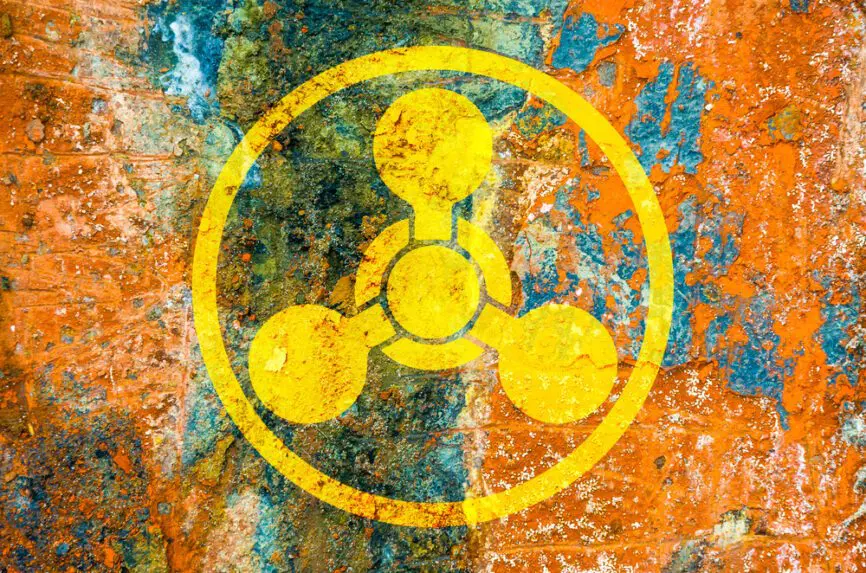Bioethics Forum Essay
Chemical Weapons Convention Reaches Milestone
Many post-World War II international structures are what might be called bioethics adjacent: They are not strictly part of the set of widely recognized global bioethics standards and instruments, like the Declaration of Helsinki, but they overlap with concerns routinely expressed in bioethics. One of these is the Chemical Weapons Convention, which celebrated its 30th anniversary this year with the destruction by all States Parties of their declared stockpiles of chemical weapons and dual-use chemicals. This milestone was verified by the Organisation for the Prohibition of Chemical Weapons with its roughly 450-person staff, including highly skilled inspectors who were on-site for the process.
The principal U.S. site for the development and stockpiling of chemical weapons was Edgewood Arsenal in Maryland, with its British counterpart at Porton Down. The chemicals of interest went through a sort of evolution, roughly from the World War I-era nitrogen mustards to lethal nerve agents like sarin, to deliriants like BZ. In the early years after Hiroshima and Nagasaki, a common rationale for these weapons was that they were more humane than The Bomb, but it gradually became clear that they were not useful on the battlefield, tended to be indiscriminate in their effects, and engendered their own kinds of suffering that was still more difficult to treat than wounds from kinetic weapons. Their close association with medical applications of chemistry also created a level of unease; Fritz Haber, who developed the first chemical weapons, won the Nobel Prize in chemistry in 1918. Fittingly, a conference that I attended recognizing the 30-year milestone was held at the Fritz Haber Institute in Berlin.
Fortunately, Edgewood never experienced a death like that at Porton in 1953 of a 20-year old RAF engineer who was exposed to sarin, as historian Ulf Schmidt has documented. In the 1950s human experiments for “ABC warfare” – atomic, biological, and chemical — fell under a Department of Defense policy that was copied verbatim from the Nuremberg Code without attribution, but the integration of these rules into practice was, to put it mildly, ineffective. (I have told this story in my book Undue Risk.) Many of these experiments are now part of the public imagination, especially those involving LSD. One of the most fascinating aspects of the renewed interest in psychedelics for therapeutic purposes is the way that the arc of this story has shifted toward legitimacy after an era of prohibition and the bad odor of their association with an astonishing range of characters from CIA chemists to the counter-culture drug guru Timothy Leary. Someone to be added to this list is the psychiatrist in charge of the Edgewood hallucinogens experiments, James S. Ketchum, who published his colorful memoir in 2006, defending his research ethics.
Even the most intensive inspection measures are no guarantee. Readers may have noted that the 30-year milestone refers to “declared stockpiles.” There are well-grounded suspicions that some countries have undeclared stockpiles and chemicals that have eluded the system; Russia’s use of Novichok comes to mind. Neither is the future certain: British experts Malcolm Dando and Michael Crowley have warned that increasing understanding of neural mechanisms is not only good for medical science but also may expose new routes to exploitation of the brain by states or nonstate actors. What about biological weapons, now a renewed worry with the potential application of AI to create new molecules? Unlike the Chemical Weapons Convention, the Biologic and Toxin Weapons Convention, with a grand total of three hard-working regular staff, has essentially no verification mechanism.
Despite the fact that there is much more work to be done in an atmosphere that is less conducive to progress than anytime since the late 1940s, in an era of evidently diminished confidence in global institutions the destruction of these chemical stockpiles is to be celebrated. At least it provides a reminder that the darkest paths are not inevitable.
Jonathan D. Moreno is the David and Lyn Silfen University Professor of Ethics at the University of Pennsylvania and a Hastings Center fellow. @jonathanmoreno.bsky.social













